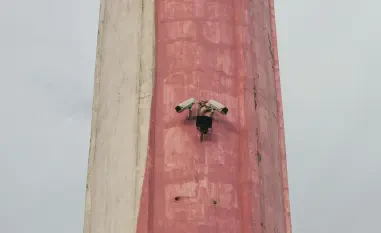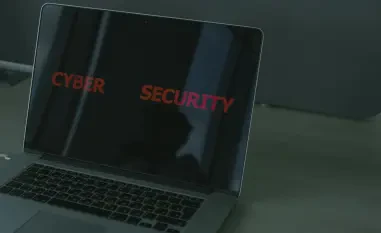What happens when a tool designed to secure remote work becomes the key to a devastating cyberattack? In a chilling development, a critical vulnerability in Triofox, a widely used file-sharing and remote access solution by Gladinet, has been exploited by a sophisticated threat actor known as UNC6485, sending shockwaves through the cybersecurity community. This breach, identified as CVE-2025-12480, has exposed the hidden risks in enterprise software trusted by countless organizations and raises urgent questions about the safety of digital infrastructure in an era of relentless cyber threats.
Why This Breach Shocks the Industry
The significance of this exploit cannot be overstated. Triofox serves as a backbone for many companies managing remote workforces, handling sensitive data with promises of robust security. Yet, with a CVSS score of 9.1, the uncovered flaw allowed attackers to gain unauthorized administrative access, potentially compromising entire IT systems. This event highlights a grim truth: even the most relied-upon tools can harbor catastrophic weaknesses that threaten data integrity and operational stability.
The implications extend beyond a single software solution. As cyber threats grow in complexity, incidents like this serve as a wake-up call for businesses worldwide. The exploitation by UNC6485 demonstrates how quickly trust in technology can erode when vulnerabilities are left unchecked, pushing organizations to rethink their approach to software security.
The Flaw That Opened the Door
At the heart of this breach lies a critical oversight in Triofox’s design. The vulnerability, present in versions prior to 16.7.10368.56560, stemmed from improper access controls that failed to lock down initial setup pages after configuration. This lapse allowed attackers to manipulate HTTP Host headers, bypassing security measures meant to restrict access to these sensitive areas.
UNC6485 capitalized on this weakness with alarming precision. By exploiting Triofox’s failure to validate localhost connections and its dependence on the easily altered Host header, the threat actor accessed administrative controls. The flaw, patched in late July of 2025, had already been weaponized in the wild, proving that even brief windows of exposure can lead to severe consequences.
Inside the Attack: A Masterclass in Malice
The exploitation unfolded as a calculated, multi-stage operation. UNC6485 began by crafting an HTTP Host header attack to infiltrate Triofox’s setup pages, creating unauthorized administrator accounts with ease. This initial breach provided a foothold into the system, setting the stage for deeper infiltration.
From there, the attacker turned a built-in antivirus feature against the system. By uploading a malicious batch script to a shared folder and configuring the antivirus path to execute it, UNC6485 achieved System-level privileges. This script then downloaded a second-stage payload disguised as the Zoho Unified Endpoint Management System installer, a clever ruse to evade detection.
The final phase saw the deployment of remote access tools like Zoho Assist and AnyDesk. These enabled a range of malicious activities, from enumerating SMB sessions to altering account passwords and escalating privileges. An encrypted SSH tunnel to a command-and-control server ensured persistent access, showcasing the depth of planning behind the operation.
Voices from the Frontline: Analyzing the Threat
Experts from Google’s Threat Analysis Group, who first reported the exploitation in late August of 2025, described UNC6485’s approach as a stark example of modern cyber sophistication. “Attackers are increasingly turning legitimate features into weapons,” noted a Google security researcher in their detailed report. This observation points to a troubling trend where built-in functionalities become liabilities if not rigorously secured.
The analysis also sheds light on the ingenuity of threat actors. By chaining together seemingly minor flaws—like inadequate request validation—UNC6485 achieved remote code execution and privilege escalation. Such tactics reflect a broader shift in cybercrime, where persistence and creativity often outpace traditional defenses.
This incident isn’t isolated. Similar exploits targeting enterprise software have surged by 30% from 2025 to early projections for 2026, according to cybersecurity studies. The message is clear: organizations must anticipate how attackers adapt, turning even minor oversights into gateways for major breaches.
Safeguarding the Future: Steps to Secure Systems
For companies relying on Triofox, immediate action is critical. Updating to version 16.7.10368.56560 or newer eliminates the CVE-2025-12480 vulnerability, closing the door that UNC6485 exploited. Beyond this, a thorough audit of administrator accounts is essential to identify and remove any unauthorized additions created during the breach.
Further protective measures include restricting the antivirus engine from executing unverified scripts or binaries, a tactic that could prevent similar attacks. Regular security audits and real-time monitoring for unusual network activity should become standard practice. Keeping all software updated promptly is another non-negotiable step in maintaining a fortified defense.
Education also plays a pivotal role. Training employees to understand access control risks and recognize the potential misuse of benign features can bolster an organization’s resilience. A proactive stance, combining technical fixes with human awareness, offers the best shield against evolving threats.
Reflecting on a Digital Wake-Up Call
Looking back, the Triofox breach by UNC6485 served as a stark reminder of the fragility inherent in digital trust. It exposed how even trusted enterprise tools could become conduits for chaos when vulnerabilities lingered unchecked. The incident underscored the relentless innovation of threat actors who turned overlooked flaws into devastating breaches.
Moving forward, organizations must prioritize rapid response mechanisms, ensuring patches are applied without delay. Investing in advanced threat detection systems became a necessity, as did fostering a culture of cybersecurity vigilance. The lessons learned from this event pushed companies to anticipate risks, reinforcing defenses before the next sophisticated attack emerged on the horizon.













